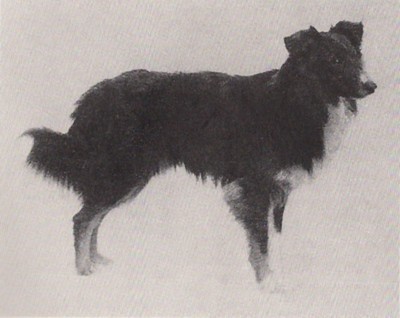
| Home | |
| Activities | |
| Polls | |
| Your pictures | |
| Heart-warming stories | |
| Rescue | |
| Our breeders | |
| Links |
 |
Where do you come from, little dog?
We all like to think of our dogs as “highly pedigree” but in fact all of our pedigree dogs are from a mixture of origins as diverse as a common street mongrel. Each breed has evolved in relation to the function he was required to fill by man:
There is little doubt that small Collie-type dogs already existed in the Shetland Isles, but how can we explain the evolution of the breed to the little dog we know today? The land is very poor in the Shetland Isles and the winters very hard, the crofters earned their paltry existence with just a handful of sheep. There was no room for dogs the size of a Colley which would require more food than much smaller dogs. Not affluent enough to afford to keep many dogs, the crofters needed a companion which could fulfil many roles. Taking this theory into account, we can suppose that the original little dog was selected for his intelligence, his robustness, his quickness and his capacities to adapt to any task.
The first photographs show us a small black dog with little resemblance to the present day Sheltie. He was certainly a mixture of multiple breeds, perhaps of Scandinavian influence such as the Yakki, maybe a bit of Spitz…., we can only speculate.
 |
It was probably during the nineteenth century that the Sheltie started to get noticed. Amongst their admirers the romantic poet and novelist Sir Walter Scott and the British Navy are noted. It is understood that at the turn of the century several Shelties were purchased and transported to the mainland. At that time, the Sheltie found himself interesting as a show dog. To begin with they were known as ‘Shetland Collies', but some of the Collie breeders were aghast at the idea that these little black dogs could share the name, so they became Shetland Sheepdogs.
The first breed club, the Scottish Shetland Sheepdog Club, was formed in 1909, and it is in Scotland that breed began to take shape. Several breeders set out to standardise the type. It is pure assumption to say what may have happened if Rough Collie blood had not been added, a breed quite well-established at the time. There is no doubt that our Shelties today owe much to this injection of Collie blood and to the foresight of those early breeders. If we owe the elegant silhouette to the Collie, sometimes this influence can still play tricks with us where size is concerned!
In 1915 the first Challenge Certificate was awarded to Frea, not in Scotland, but in Birmingham, and by the time of World War I the Shetland Sheepdog was recognised as a pretty little show dog with working qualities.
Article inspired by “The Complete Shetland Sheepdog” by Margaret Norman (Francehill)